You are currently viewing SemiWiki as a guest which gives you limited access to the site. To view blog comments and experience other SemiWiki features you must be a registered member. Registration is fast, simple, and absolutely free so please,
join our community today!
WP_Term Object
(
[term_id] => 178
[name] => IP
[slug] => ip
[term_group] => 0
[term_taxonomy_id] => 178
[taxonomy] => category
[description] => Semiconductor Intellectual Property
[parent] => 0
[count] => 1896
[filter] => raw
[cat_ID] => 178
[category_count] => 1896
[category_description] => Semiconductor Intellectual Property
[cat_name] => IP
[category_nicename] => ip
[category_parent] => 0
[is_post] =>
)
Arasan recently adopted ClioSoft for data management (DM) for design and development of Arasan’s Silicon IP products. This morning I talked to Erik Peterson, Senior CAD and Verification Engineer AMS Design about their experiences bringing up ClioSoft.
Data management infrastructure is critical with engineering projects… Read More
We’ve become familiar with Imagination Technologies as a leading provider of IP for mobile GPUs, and within the last year the acquisition of the MIPS architecture has established them further in NPU and SoC circles. Their latest move targets an IP solution more in line with their heritage.
Imagination, way before becoming famous… Read More
We have posted several blogs related to Cadence IP strategy, or I should say new strategy. Each of these blogs was dealing with a particular product, like PCI Express gen-3 Controller IP, latest DDR4 Memory Controller or Wide I/O. This approach was equivalent to describe trees, one after one, and finally ignoring the forest! It’s… Read More
High Definition Multimedia Interface (HDMI) is today part of our day to day life, at home as well as at our office we are using devices integrating HDMI ports. HDMI penetration is well illustrated by this picture (created in Dec. 2011 by In-Stat): from DTV to Game console, the devices belong to the Consumer Electronics market segments,… Read More
As a full time financial writer/investor, I am always on the lookout for compelling risk/reward opportunities, particularly in small-cap tech. While the world of large-cap tech is generally well understood by the investment/analyst community, smaller cap names are usually under-followed and often misunderstood. One such… Read More
It was on 26th April 1985 (at 3pm to be precise) that the very first ARM silicon sprang in to life – it was a 25K transistor design implemented in 3um technology with just 2 layers of metal.
However back then the “A” in ARM stood for Acorn – ARM the company had yet to be formed. Acorn sold computers to schools and so cost… Read More
I came across an interesting article by Will Strauss which is pretty much the history of DSP in communication chips. Having lived through the early part of the history while I was at VLSI Technology I found it especially interesting.
At VSLI, our first GSM (2G, i.e. digital not analog air interface) was a 5-chip chipset. The DSP functionality… Read More
Now a day, a SoC can be highly complex, having 100s of IPs performing various functionalities along with multi-core CPUs on it. Managing power, performance and area of the overall semiconductor design in the SoC becomes an extremely challenging task. Even if the IPs and various design blocks are highly optimized within themselves,… Read More
eMMC Mobile Memoryby Paul McLellan on 11-27-2013 at 11:40 amCategories: Arasan, IP
eMMC is the standard for mobile memory used in smartphones and tablets. The latest standard, released just this year, is eMMC 5.0. The previous standard, 4.51, was only released last year so things are moving quickly.
Arasan have a webinar next week to bring you up to speed on eMMC 5.0 in general and, of course, their own IP offering… Read More
Social Media at ARMby Daniel Payne on 11-26-2013 at 3:27 pmCategories: Arm, IP
The number one semiconductor IP company in the world is ARM, and they have really figured out how to use social media in a big way to communicate with and listen to their customers. When you first visit the Home page for ARM there are four social media icons displayed in monochrome underneath the menu bar. As you hover over the icons (Twitter,… Read More


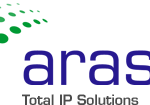
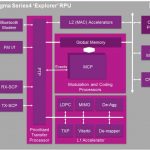
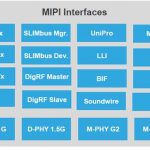
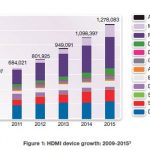



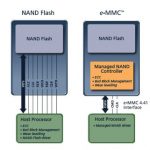

Jensen Huang Drops Donald Trump Truth Bomb on Joe Rogan Podcast